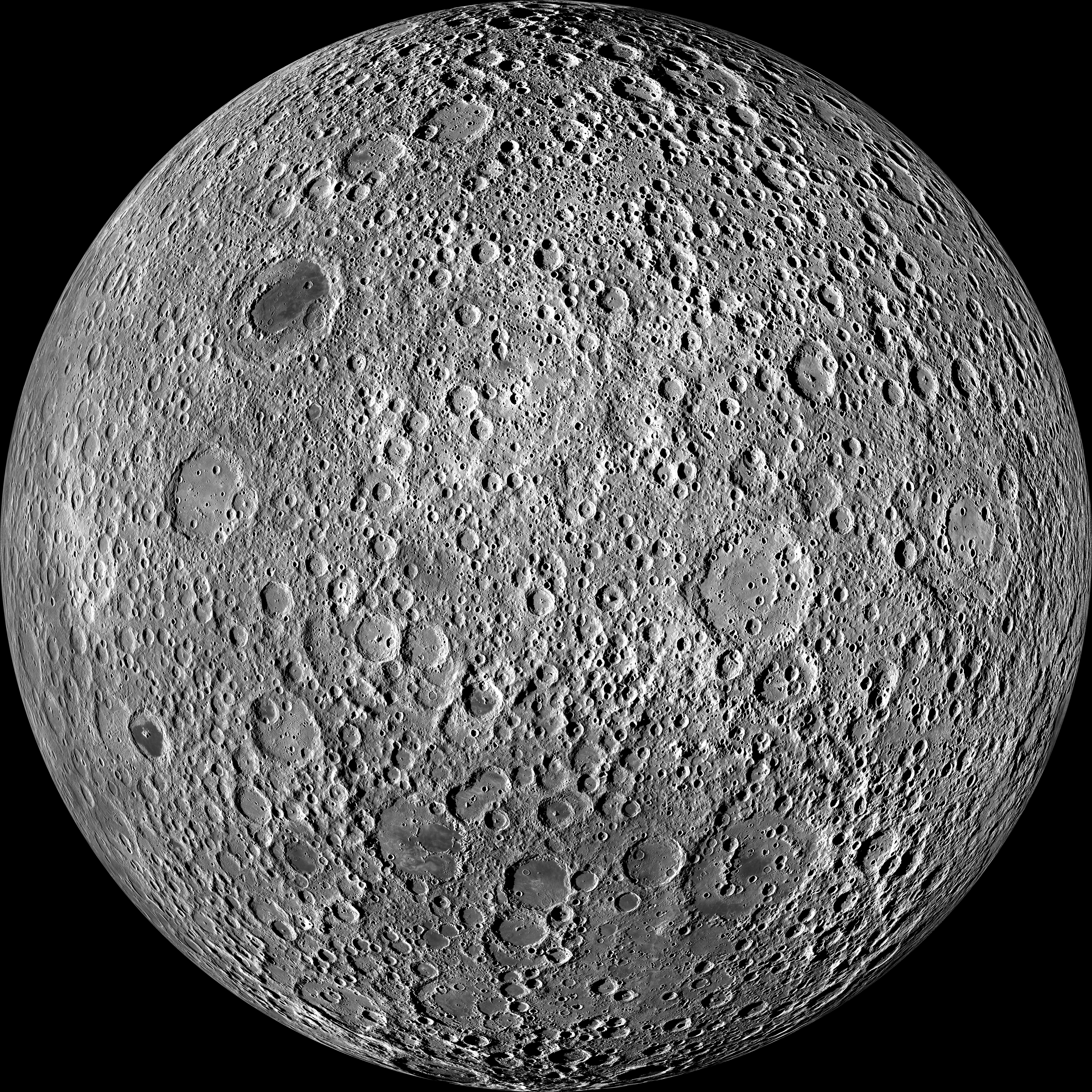|
Chang'e 4
Chang'e 4 (; ) is a robotic spacecraft mission, part of the second phase of the Chinese Lunar Exploration Program. China achieved humanity's first soft landing on the far side of the Moon, on 3 January 2019. A communication relay satellite, , was first launched to a halo orbit near the Earth–Moon L2 point in May 2018. The robotic lander and ''Yutu-2'' () rover were launched on 7 December 2018 and entered lunar orbit on 12 December 2018, before landing on the Moon's far side. The mission is the follow-up to Chang'e 3, the first Chinese landing on the Moon. The spacecraft was originally built as a backup for Chang'e 3 and became available after Chang'e 3 landed successfully in 2013. The configuration of Chang'e 4 was adjusted to meet new scientific and performance objectives. Like its predecessors, the mission is named after Chang'e, the Chinese Moon goddess. In November 2019, Chang’e 4 mission team was awarded Gold Medal by the Royal Aeronautical Society. In October ... [...More Info...] [...Related Items...] OR: [Wikipedia] [Google] [Baidu] |
Yutu-2
''Yutu-2'' is the robotic lunar rover component of CNSA's Chang'e 4 mission to the Moon, launched on 7 December 2018 18:23 UTC, it entered lunar orbit on 12 December 2018 before making the first soft landing on the far side of the Moon on 3 January 2019. ''Yutu-2'' is currently operational as the longest-lived lunar rover and the first lunar rover traversing the far side of the Moon. By January 2022, ''Yutu-2'' had travelled a distance of more than along the Moon's surface. Overview The total landing mass is . Both the stationary lander and ''Yutu-2'' rover are equipped with a radioisotope heater unit (RHU) in order to heat their subsystems during the long lunar nights,China Shoots for the Moon's Far Side (PDF) IEEE.org. 2018. while electrical power is generated by |
Communications Satellite
A communications satellite is an artificial satellite that relays and amplifies radio telecommunication signals via a transponder; it creates a communication channel between a source transmitter and a receiver at different locations on Earth. Communications satellites are used for television, telephone, radio, internet, and military applications. Many communications satellites are in geostationary orbit above the equator, so that the satellite appears stationary at the same point in the sky; therefore the satellite dish antennas of ground stations can be aimed permanently at that spot and do not have to move to track the satellite. Others form satellite constellations in low Earth orbit, where antennas on the ground have to follow the position of the satellites and switch between satellites frequently. The high frequency radio waves used for telecommunications links travel by line of sight and so are obstructed by the curve of the Earth. The purpose of communications ... [...More Info...] [...Related Items...] OR: [Wikipedia] [Google] [Baidu] |
Perilune
An apsis (; ) is the farthest or nearest point in the orbit of a planetary body about its primary body. For example, the apsides of the Earth are called the aphelion and perihelion. General description There are two apsides in any elliptic orbit. The name for each apsis is created from the prefixes ''ap-'', ''apo-'' (), or ''peri-'' (), each referring to the farthest and closest point to the primary body the affixing necessary suffix that describes the primary body in the orbit. In this case, the suffix for Earth is ''-gee'', so the apsides' names are ''apogee'' and ''perigee''. For the Sun, its suffix is ''-helion'', so the names are ''aphelion'' and ''perihelion''. According to Newton's laws of motion, all periodic orbits are ellipses. The barycenter of the two bodies may lie well within the bigger body—e.g., the Earth–Moon barycenter is about 75% of the way from Earth's center to its surface. If, compared to the larger mass, the smaller mass is negligible (e.g., ... [...More Info...] [...Related Items...] OR: [Wikipedia] [Google] [Baidu] |
Chang'e 6
Chang'e 6 () is a planned robotic Chinese lunar exploration mission that is expected to launch in 2025 and perform China's second sample return mission. Like its predecessors, the spacecraft is named after the Chinese moon goddess Chang'e. Overview The Chinese Lunar Exploration Program is designed to be conducted in fourChang'e 4 press conference CNSA, broadcast on 14 January 2019. phases of incremental technological advancement: The first is reaching lunar orbit, completed by Chang'e 1 in 2007 and Chang'e 2 in 2010. The second is landing and roving on the Moon, as did in 2013 and |
Chang'e 2
Chang'e 2 (; ) is a Chinese unmanned lunar probe that was launched on 1 October 2010. It was a follow-up to the Chang'e 1 lunar probe, which was launched in 2007. Chang'e 2 was part of the first phase of the Chinese Lunar Exploration Program, and conducted research from a 100-km-high lunar orbit in preparation for the December 2013 soft landing by the Chang'e 3 lander and rover. Chang'e 2 was similar in design to Chang'e 1, although it featured some technical improvements, including a more advanced onboard camera. Like its predecessor, the probe was named after Chang'e, an ancient Chinese moon goddess. After completing its primary objective, the probe left lunar orbit for the Earth–Sun Lagrangian point, to test the Chinese tracking and control network, making the China National Space Administration the third space agency after NASA and ESA to have visited this point. It entered orbit around L2 on 25 August 2011, and began transmitting data from its new position in Septembe ... [...More Info...] [...Related Items...] OR: [Wikipedia] [Google] [Baidu] |
Moon Farside LRO 5000
The Moon is Earth's only natural satellite. It is the fifth largest satellite in the Solar System and the largest and most massive relative to its parent planet, with a diameter about one-quarter that of Earth (comparable to the width of Australia). The Moon is a planetary-mass object with a differentiated rocky body, making it a satellite planet under the geophysical definitions of the term and larger than all known dwarf planets of the Solar System. It lacks any significant atmosphere, hydrosphere, or magnetic field. Its surface gravity is about one-sixth of Earth's at , with Jupiter's moon Io being the only satellite in the Solar System known to have a higher surface gravity and density. The Moon orbits Earth at an average distance of , or about 30 times Earth's diameter. Its gravitational influence is the main driver of Earth's tides and very slowly lengthens Earth's day. The Moon's orbit around Earth has a sidereal period of 27.3 days. During each synodic per ... [...More Info...] [...Related Items...] OR: [Wikipedia] [Google] [Baidu] |
International Astronautical Federation
The International Astronautical Federation (IAF) is an international space advocacy organization based in Paris, and founded in 1951 as a non-governmental organization to establish a dialogue between scientists around the world and to lay the information for international space cooperation. It has over 390 members from 68 countries across the world. They are drawn from space agencies, companies, universities, professional associations, museums, government organizations and learned societies. The IAF organizes the annual International Astronautical Congress (IAC). As of 2019, Pascale Ehrenfreund has served as the president of the IAF. History After World War II, Heinz Gartmann, Gunter Loeser, and Heinz-Hermann Koelle formed the German Rocket Society. They contacted the British Interplanetary Society (BIS) and Groupement Astronautique Français. The French group's leader, Alexandre Ananoff, organized the First International Congress for Astronautics in Paris, France, in ... [...More Info...] [...Related Items...] OR: [Wikipedia] [Google] [Baidu] |
Royal Aeronautical Society
The Royal Aeronautical Society, also known as the RAeS, is a British multi-disciplinary professional institution dedicated to the global aerospace community. Founded in 1866, it is the oldest aeronautical society in the world. Members, Fellows, and Companions of the society can use the post-nominal letters MRAeS, FRAeS, or CRAeS, respectively. Function The objectives of The Royal Aeronautical Society include: to support and maintain high professional standards in aerospace disciplines; to provide a unique source of specialist information and a local forum for the exchange of ideas; and to exert influence in the interests of aerospace in the public and industrial arenas, including universities. The Royal Aeronautical Society is a worldwide society with an international network of 67 branches. Many practitioners of aerospace disciplines use the Society's designatory post-nominals such aFRAeS CRAeS, MRAeS, AMRAeS, and ARAeS (incorporating the former graduate grade, GradRAeS). T ... [...More Info...] [...Related Items...] OR: [Wikipedia] [Google] [Baidu] |
Moon Goddess
A lunar deity or moon deity is a deity who represents the Moon, or an aspect of it. These deities can have a variety of functions and traditions depending upon the culture, but they are often related. Lunar deities and Moon worship can be found throughout most of recorded history in various forms. Moon in religion and mythology Many cultures have implicitly linked the 29.5-day lunar cycle to women's menstrual cycles, as evident in the shared linguistic roots of "menstruation" and "moon" words in multiple language families. This identification was not universal, as demonstrated by the fact that not all moon deities are female. Still, many well-known mythologies feature moon goddesses, including the Greek goddess Selene, the Roman goddess Luna, and the Chinese goddess Chang'e. Several goddesses including Artemis, Hecate, and Isis did not originally have lunar aspects, and only acquired them late in antiquity due to syncretism with the de facto Greco-Roman lunar deity Selene/Luna. ... [...More Info...] [...Related Items...] OR: [Wikipedia] [Google] [Baidu] |
Business Insider
''Insider'', previously named ''Business Insider'' (''BI''), is an American financial and business news website founded in 2007. Since 2015, a majority stake in ''Business Insider''s parent company Insider Inc. has been owned by the German publishing house Axel Springer. It operates several international editions, including one in the United Kingdom. ''Insider'' publishes original reporting and aggregates material from other outlets. , it maintained a liberal policy on the use of anonymous sources. It has also published native advertising and granted sponsors editorial control of its content. The outlet has been nominated for several awards, but is criticized for using factually incorrect clickbait headlines to attract viewership. In 2015, Axel Springer SE acquired 88 percent of the stake in Insider Inc. for $343 million (€306 million), implying a total valuation of $442 million. In February 2021, the brand was renamed simply ''Insider''. History ''B ... [...More Info...] [...Related Items...] OR: [Wikipedia] [Google] [Baidu] |
Moon Rabbit
The Moon rabbit or Moon hare is a mythical figure in East Asian and indigenous American folklore, based on pareidolia interpretations that identify the dark markings on the near side of the Moon as a rabbit or hare. In East Asia, the rabbit is seen as pounding with a mortar and pestle, but the contents of the mortar differ among Chinese, Japanese, Korean and Vietnamese folklore. In Chinese folklore, the rabbit is often portrayed as a companion of the Moon goddess Chang'e, constantly pounding the elixir of life for her and some show the making of cakes or rice cakes; but in Japanese and Korean versions, the rabbit is pounding the ingredients for mochi or some other type of rice cakes; in the Vietnamese version, the Moon rabbit often appears with Hằng Nga and Chú Cuội, and like the Chinese version, the Vietnamese Moon rabbit also pounding the elixir of immortality in the mortar. In some Chinese versions, the rabbit pounds medicine for the mortals and some include making of ... [...More Info...] [...Related Items...] OR: [Wikipedia] [Google] [Baidu] |
Lunar Lander
A lunar lander or Moon lander is a spacecraft designed to land on the surface of the Moon. As of 2021, the Apollo Lunar Module is the only lunar lander to have ever been used in human spaceflight, completing six lunar landings from 1969 to 1972 during the United States' Apollo Program. The design requirements for these landers depend on factors imposed by the payload, flight rate, propulsive requirements, and configuration constraints. Other important design factors include overall energy requirements, mission duration, the type of mission operations on the lunar surface, and life support system if crewed. The relatively high gravity and lack of lunar atmosphere negates the use of aerobraking, so a lander must use propulsion to decelerate and achieve a soft landing. Several studies indicate the potential for both scientific and technological benefits from sustained lunar surface exploration that would culminate in the utilization of lunar resources, or in the development ... [...More Info...] [...Related Items...] OR: [Wikipedia] [Google] [Baidu] |


.png)




